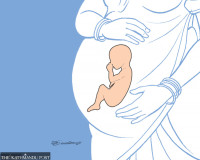Health
Vaccine mishandling led to wastage of over 50,000 doses: Report
It points out more pressing issues regarding vaccination and record keeping, and says it found 455,355 more doses than doses on government records.
Arjun Poudel
When Nepal launched its vaccination drive in the fourth week of January last year, it became one of the few countries to be able to start vaccinating its population against Covid-19, which was wreaking havoc across the world. Soon after, Nepal faced a crisis, as it struggled to secure enough doses. The second wave was devastating. But the UN-backed COVAX scheme and some other friendly nations, China at the forefront of extending its support, came forward to help Nepal get the jabs to fight the pandemic.
Concerns then had started to grow about the management of vaccines. For a country like Nepal every dose mattered; every dose meant saving one life. And there was a need on the part of authorities to ensure that not even a single dose is wasted.
Then there came some reports that some 2.4 million doses were “missing”, meaning there was no record about them.
A committee formed by the government to find the missing doses now says that as many as 56,908 doses of Covid-19 vaccines supplied to districts and the local level “were wasted”.
The committee did not find any doses missing but found that thousands of doses of vaccines either expired or were damaged due to negligence or lack of proper handling.
According to the report, 25,562 doses of Moderna vaccine were found to have been ruined. Of them 14,020 doses were ruined under the watch of local governments and the remaining 11,542 wasted doses were under the watch of district authorities. Likewise, 19,049 doses of AstraZeneca/Covishield vaccine doses were ruined and of them 7,369 were found ruined at the local level and 11,690 doses at the district level.
Besides, 7,023 doses of Vero Cell vaccine, 5,195 doses of Janssen vaccine, and 79 doses of Pfizer-BioNTech vaccine doses were ruined.
“Vaccine doses unfit for use have been found in abnormally high numbers in some districts and local units,” states the report, a copy of which is seen by the Post.
What is startling is that the five-member committee, led by chief specialist Dr Guna Raj Lohani, has found 455,355 doses more in stock than the actual doses that arrived in the country. Yashoda Aryal, Anil Thapa, Dr Abhiyan Gautam, Dr Gunanidhi Sharma are other members of the committee.
So far, Nepal has received 47,882,800 doses of Covid-19 vaccines—AstraZeneca, Vero Cell, Moderna, Janssen and Pfizer-BioNTech, according to the Health Ministry.
Nepal so far has used 35,575,714 doses to vaccinate its population.
Usually, vaccines come in 10-dose, five-dose, two-dose or one-dose vials.
The report says the surplus doses, however, could be because some 10-dose vials were found to have 11 doses.
The Ministry of Health had formed the probe committee after Health Secretary Dr Roshan Pokhrel’s statement before a House committee that around 2.4 million doses were unaccounted for.
But Secretary Pokhrel had told the Post that he actually meant that records of 2.4 million doses were yet to be updated.
“I didn’t mean vaccine doses had gone missing. I meant data of about 2.4 million doses are yet to be updated from districts and local levels,” Pokhrel had told the Post then.
Pokhrel told the Post on Tuesday that the issue is not about missing doses.
“It rather has to do with our reporting system and data keeping,” said Pokhrel. “It also shows that agencies in districts and local level should be more serious while handling vaccine doses.”
When Nepal started receiving the jabs, experts had told the Post that storage, the regular administration of vaccines and keeping proper records could be an issue.
Officials at the Health Ministry were quick to blame sub-national governments. They said that there was a growing tendency among the local level governments to demand more doses assuming that provincial and central stores would not supply the doses demanded by them.
“Lack of actual data of eligible population for vaccination is also a problem,” said Dr Sangita Mishra, spokesperson for the Health Ministry. “Health agencies at the district and local levels demand vaccines as per the estimation of the population but they do not have a record of the floating population.”
Demanding vaccines without ascertaining the storage capacity by local health agencies, and district authorities supplying vaccines without considering the storage capacities of the local agencies, and poor handling of vaccines are considered to be some of the reasons for the wastage.
Despite some initial hiccups, Nepal has managed to accelerate its drive to vaccinate its populations. As of Tuesday, 16,549,489 people, or 56.7 percent of the total population, have been fully immunised against Covid.
But the Health Ministry committee report has exposed that mismanagement is rife and failure to address the issue could create more problems. Experts say proper record keeping helps officials devise policies.
The report shows that some districts and local health agencies were not updating details of their vaccine stocks and administered doses on a regular basis.
Even if Covid-19 vaccines are being provided free of cost, some people complained they were charged fees for vaccination, the report says.
While people from non-priority groups were found getting vaccine doses, there were many who were taking boosters before authorities made an announcement for the same, according to the report.
“We prepared the report based on our findings,” Lohani, who led the probe committee, told the Post. “We hope that the authorities concerned will implement the recommendations.”
The report has also pointed out authorities’ failure to run the vaccination programme in a well-managed way.
“The report shows several weaknesses and shortcomings,” said Mishra, the spokesperson for the Health Ministry. “We have to correct our mistakes, overcome weaknesses and try to make the ongoing vaccination drive more effective. The ministry will implement the recommendations of the study committee.”




 6.81°C Kathmandu
6.81°C Kathmandu














